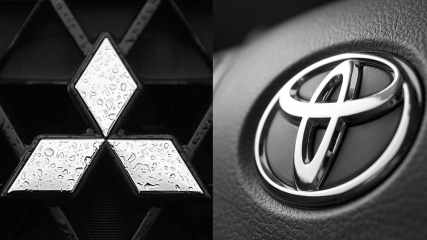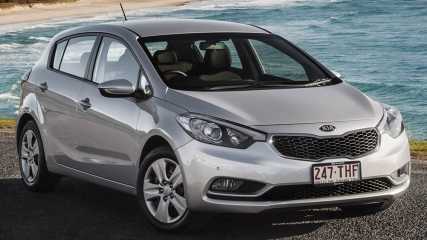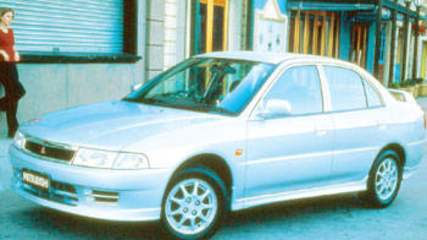Lancer big with inner-city types
By CarsGuide team · 01 May 2008
Over the years it's often been hidden in the shadows of its big brothers, Magna and Verada. This is a shame because it's a very competent car in its own right, it's built to a high standard and is simple to drive, with handling that's better than average for the type. Ride comfort is generally good but rough roads can rattle things about at times, especially in the budget-priced variants.
The latest, all-new Lancer was released half-way through 2007 and, as is often the case with new releases, this has renewed interest in the model as a whole. It's been a consistently good seller in recent years, meaning that there are plenty on the used car scene.
The older model Lancers are a little smaller than the latest one, which is approaching the original Mitsubishi Magna in size. However, some of the added size is to let it conform to crash safety laws so there isn't as much extra interior space as you might expect. Interior space is good in the front, but can be marginal in the rear if the front seats are adjusted rearwards to suit tall occupants. Rear seat headroom can be tight in the hatches, but is generally fine in the sedans and wagons.
Lancer is simple to drive and park and has long been a favourite with those living in the suburbs and inner-city areas. It's OK in the bush and doesn't get knocked around too badly on rough roads, though this isn't the habitat it was aimed at.
Handling is better than average for the type, though you wouldn't really call the Lancer a driver's machine. The Lancer MR coupe of 1997 to 2004 has firmer suspension and tauter steering so is an exception to the rule and has gained a reasonable reputation among those in the hot-four scene.
There have been many Lancer body types over the years; two-door coupes, three-door hatches, four-door sedans and five-door station wagons. However, not all were on sale at all times. Note that there was an overlap with the station wagon as it didn't always change its design at the same time as the rest of the range. Thus we sometimes saw the old wagons being sold for up to two years alongside the new sedans.
Three-door hatches prior to 1996 were called Lancers but the name was changed to Mirage with the introduction of the new model of that year. However, Mirage shares quite a few under-the-skin parts with Lancer and many of the remarks here can be heeded by potential Mirage buyers.
Under the bonnet
Lancer engines are all four-cylinder units. They had a displacement of 1.5 litres in the early days, a 1.8-litre unit being used in the upmarket versions from 1992 and a 2.0-litre in most models from 2002. The 1.5 engine used a carburettor until 1996 and fuel injection from then onwards.
Because the Lancer was approaching the end of its life, August 2005 saw a 2.4-litre four-cylinder engine being squeezed under the bonnet to grab sales away from the competition. This big engine has plenty of torque for safe overtaking, yet it doesn't use a lot more fuel than the smaller engines as it's running in a lightly stressed condition almost all of the time. This engine is the one to go for if your budget is up to it.
Manual gearboxes are all five-speed units. Automatic transmissions on most older models were three-speed units until 1996, when they moved up to four speeds.
The hot Lancer GSR of 1992 to 1996 is a rally-based special with all-wheel-drive and a hot twin-cam, turbo engine. It can cost big money to insure, service and repair, and is best left to the revheads. Lancer GSR models prior to the turbocharged version used a non-turbo 1.6-litre and have far less performance than the later model.
The highly specialised, highly priced Lancer Evolution models are even further up the performance scale and are so far removed from the rest of the Lancer range that we'll ignore them here.
Spare parts and repair prices are about average for this class and the Australian Mitsubishi dealer network is widespread and works efficiently.
The Lancer is relatively easy for the home mechanic to work on, with good under-bonnet space and a conventional layout.
Insurance charges are about average for the class, though you are likely to be charged substantially more for the hot GSR.
Danger signs
If possible, start the engine when it is completely cold. It should fire up within a couple of seconds and idle reasonably smoothly and quietly straight away.
Carburettor engines, only fitted until 1996, won't be quite as smooth or tractable when cold as fuel-injected ones, but if one seems too bad call in an expert for advice.
If the engine puffs oily smoke from the exhaust under hard acceleration it may be due for an overhaul.
Feel for an automatic transmission that is slow to engage gear or is inclined to change up and down unnecessarily. A manual gearbox should be slick and easy to use. If not there could be troubles — fast changes down through the gears will show the problem first.
Check for previous body repairs by looking for ripples in the panels, paint that doesn't match correctly from one panel to another, and tiny spots of paint on glass, badges, body trim and so on.
Rust is uncommon but check the lower areas of the body and the bottom corners of the doors, tailgate or boot lid as applicable.
A Lancer GSR may have had a hard life in the hands of an amateur rally driver. Look for full-harness safety belts, a roll cage, rally instruments and driving lights. Check for under body damage and for panel repairs. Also listen for a noisy turbo and/or one that's slow to respond to the throttle.


_0.jpg)


